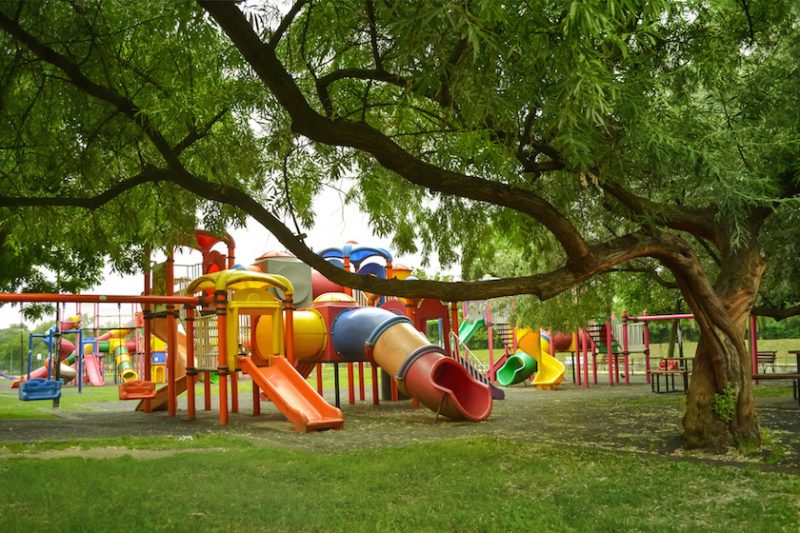Children and teens should be more active in PE, the classroom and after-school programs.
Despite years of prodding from their parents, teachers and doctors, kids and teens still aren’t doing nearly enough physical activity, and changes need to be made in schools to help kids step it up, says a report released Friday by the U.S. Department of Health and Human Services.
A recent government survey found that only 29% of high school students participated in 60 or more minutes a day of physical activity on each of the seven days prior to the survey. That’s the amount recommended for kids and teens by the government’s physical activity guidelines. Boys (38%) were more likely than girls (19%) to meet the guidelines.
“Dramatic action needs to be taken to increase physical activity in American kids,” says Russell Pate, a member of the committee for the President’s Council on Fitness, Sports & Nutrition, which produced the new report. He’s a professor of exercise science at the University of South Carolina.
Schools are the best place to start because kids are there for six to seven hours a day, he says. “Kids love to move when they are exposed to creative, well-designed programs during physical education, class exercise breaks, recess and before- and after-school programs.
“We have to use all the opportunities during the school day to increase kids’ physical activity.”
Risa Lavizzo-Mourey, chair of the committee that did the report and president and CEO of the Robert Wood Johnson Foundation, says, “The evidence shows that being physically active can help kids get and stay fit and perform better at their schoolwork.”
In 2008, the government released physical activity guidelines for Americans, which recommended that kids and teens should do an hour or more of moderate-intensity to vigorous aerobic physical activity each day. The adult guidelines recommend that they get at least 2½ hours (150 minutes) of moderate-intensity aerobic physical activity each week, such as brisk walking, or 1¼ hours (75 minutes) of a vigorous-intensity aerobic activity, such as jogging or swimming laps, or a combination of the two types, to get the most health benefits from exercise. This activity should be done in at least 10-minute bouts.
Now, five years after the release of those guidelines, the expert committee concluded that the recommendations still offer people solid exercise advice based on the latest research. But the group identified strategies to increase physical activity, especially among children. Among the suggestions:
– Get kids moving more in schools. Offer students “enhanced physical education” — that is, increased lesson time from well-trained specialists and instructional practices that provide a lot of moderate-to-vigorous physical activity. Also offer classroom activity breaks, activity sessions before and/or after school, and opportunities to walk and bike to school.
– Give preschool children lots of opportunities to be active. Increase the time they spend outside, give them play equipment such as balls and tricycles, provide trained staff to lead physical activities and increase the time kids get to do these kinds of things.
– Change the built environment. Improve walking and biking infrastructure, such as sidewalks, multiuse trails and bike lanes. Increase access and proximity to parks.
Kathleen Janz, also a committee member and a professor of health and human physiology at the University of Iowa, says, “Parents need to stand up and be part of this solution.
“Ultimately, parents have a lot of power to increase their kids’ activity by taking them places to be active, buying them pieces of sports equipment, encouraging them and playing with them. And those are things that don’t cost all that much money.”
Current research suggests that the best way to raise an active child is to be activewith your child by playing tag, going on family walks, raking leaves, gardening together and even playing badminton or other sports where everyone succeeds, Janz says.
The Government’s Physical Activity Guidelines for Americans say:
– Children and adolescents should do an hour or more of moderate-intensity to vigorous aerobic physical activity each day. That should include vigorous activity at least three days a week. And it should include bone-strengthening activities such as running, jumping rope, skipping, playing soccer and playing tag at least three days a week and muscle-strengthening activities such as tug of war, sit-ups, pull-ups and push-ups (modified for younger kids) at least three days a week. It is important to encourage young people to participate in physical activities that are appropriate for their age, that are enjoyable and that offer variety.
– Adults should get at least 2½ hours of moderate-intensity physical activity each week, such as brisk walking, or 1¼ hours of a vigorous-intensity activity, such as jogging or swimming laps, or a combination of the two types, to get the most health benefits from exercise. These aerobic activities should be done in at least 10-minute bouts.
– To get even more health benefits, people should do five hours of moderate-intensity physical activity each week or 2½ hours of vigorous activity.
– Adults should do muscle-strengthening (resistance) activities at a moderate- or high-intensity level for all major muscle groups two or more days a week. This should include exercises for the chest, back, shoulders, upper legs, hips, abdomen and lower legs. The exercises can be done with free weights or machines, resistance bands, calisthenics that use body weight for resistance (push-ups, pull-ups, sit-ups), or carrying heavy loads or doing heavy gardening such as digging or hoeing.
– Older Americans should follow the guidelines for other adults if they are able. If not, they should be as active as their physical condition allows. If they are at risk of falling, they should do exercises that improve balance.
– Adults with disabilities should also follow the guidelines for other adults if they are able.
(Photo: Hans Pennink, AP)

